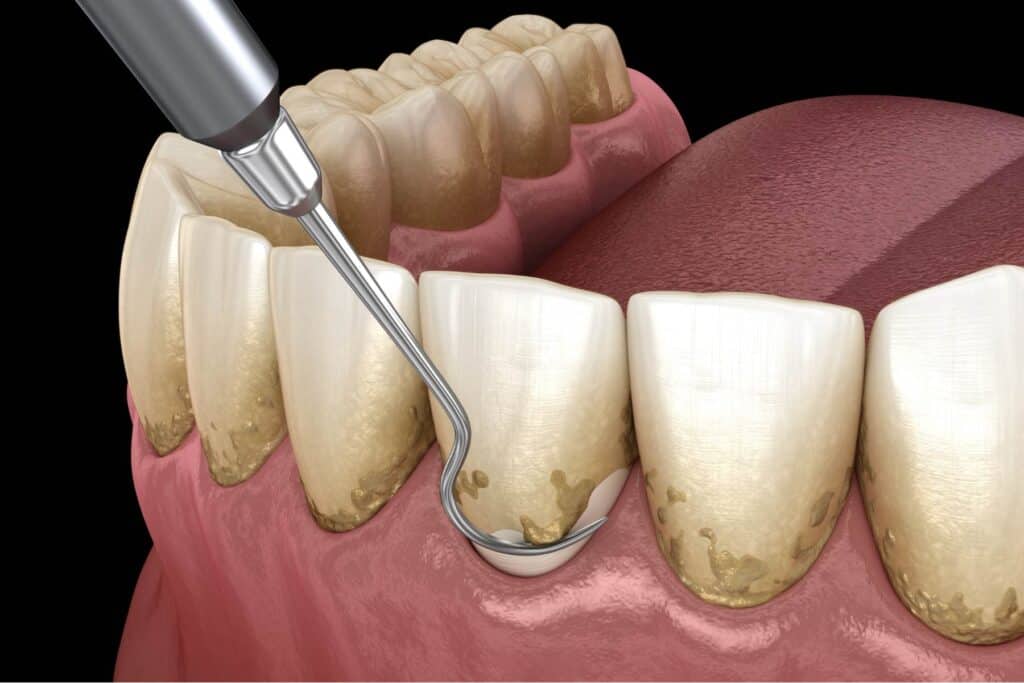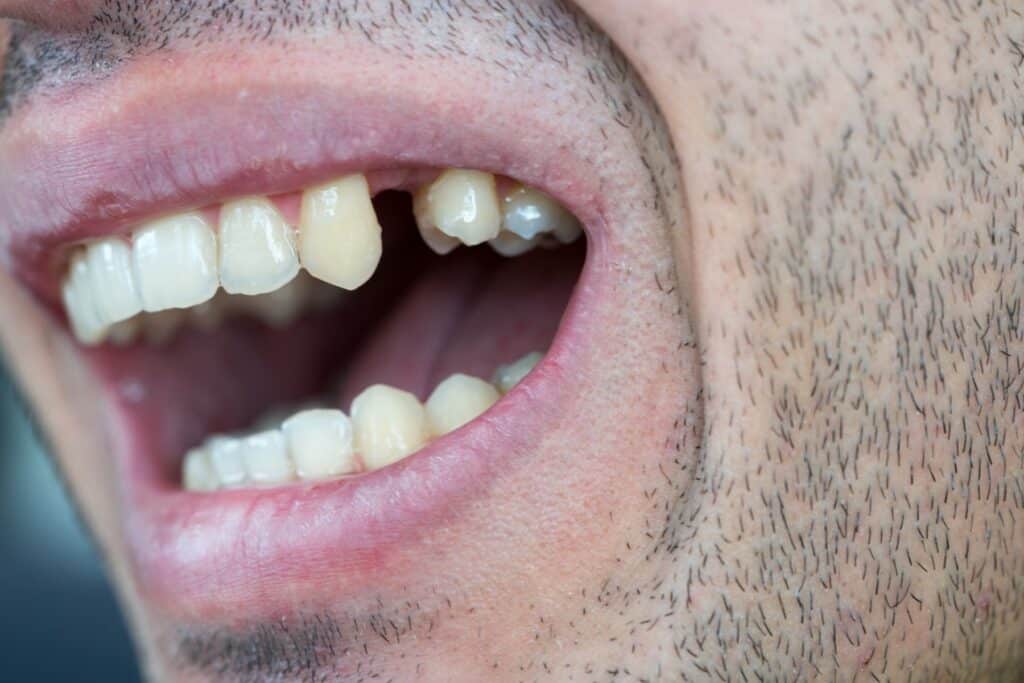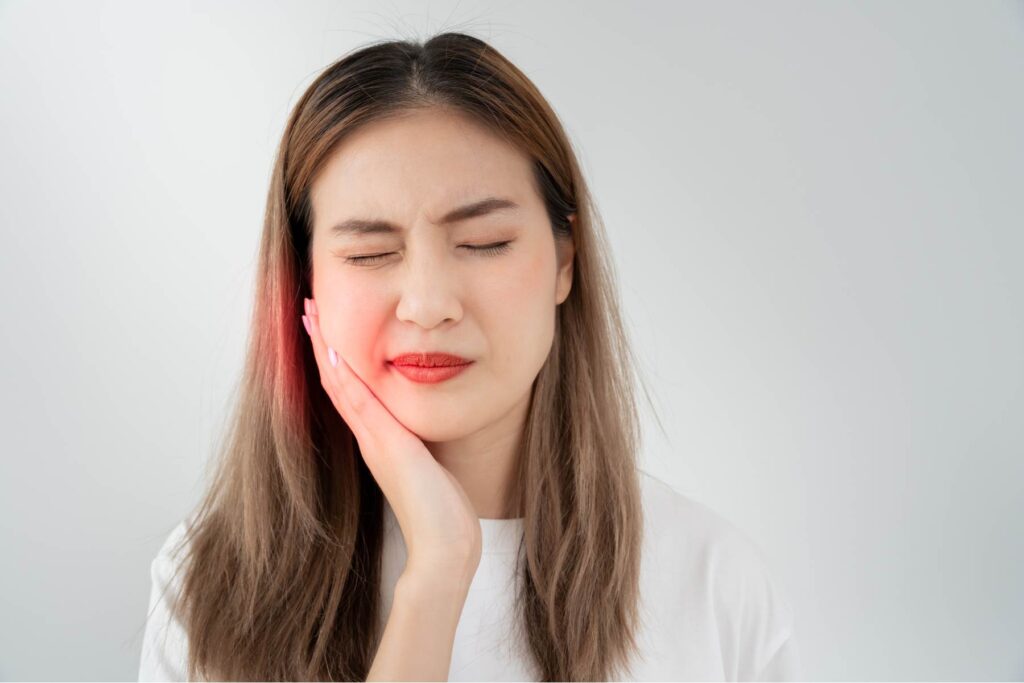Sampling the cookies your best friend made with her favorite recipe. Displaying a big grin when the photographer yells, “Say cheese!” Trying out for a speaking role in the latest community theatre production without worrying that you’ll trip up on your lines due to failing or missing teeth.
These are all common activities that most people take for granted – until bad teeth get in the way.
If you’re dealing with problem teeth, you’re undoubtedly looking for solutions that will help you get back on track toward living your best life without worrying about mouth pain, the appearance of your smile or whether you can enjoy a healthy meal at the family dinner table or your favorite restaurant.
The answers you’re after depend largely on the extent of your tooth decay or damage. If you’re in the early stages of tooth decay or you have only one broken or chipped tooth, your options will be quite different from those of a person who has many failing or missing teeth or has experienced many years of declining oral health.
Why it’s important to address failing teeth
Having confidence in your smile is reason enough to take care of your teeth. But did you know that the condition of your teeth and gums can have a big impact on your overall health? When you think about it, this is not surprising. After all, your mouth is the gateway to your digestive and respiratory tracts. Studies have linked problems with declining teeth and gums to serious health conditions, including cardiovascular disease.
Additionally, when you have toothaches or you try to steer clear of a gap in your teeth while chewing food, you may consciously or unconsciously start avoiding nutritious foods that your body needs to stay healthy. For example, consistently choosing easy-to-chew processed foods instead of fresh fruit and vegetables can deprive your body of essential nutrients like vitamins C and E.
Whether your damaged teeth are the result of lax oral hygiene habits or some other cause, you’ll want to take corrective action right away to prevent further deterioration of your overall health.
Causes of failing teeth
You’re hardly alone if you’re dealing with missing or failing teeth. According to the American College of Prosthodontists, an estimated 178 million Americans have at least one missing tooth, and about 40 million have lost all their teeth. Many more people have broken, loose or decaying teeth that interfere with their routine daily activities and undermine their self-esteem.
The detrimental effects of bad teeth tend to be similar no matter the cause, but the reasons for tooth damage can vary widely. Here are a few of the most common:
PERIODONTAL DISEASE
Also known as advanced gum disease, periodontal disease is the top cause of tooth loss in adults, according to the National Institute of Dental and Craniofacial Research. Inflammation caused by bacterial infections can cause gums to pull away from the teeth, exposing the roots to damage and even leading to teeth becoming loose and falling out.

TOBACCO USE
Experts say smokers are three times more likely than non-smokers to develop periodontal disease, which in turn makes them more susceptible to tooth loss. Smokeless tobacco, also known as dip, chewing tobacco or snuff, typically contains sugar along with other chemicals that can promote cavities and gum disease, according to the American Dental Association (ADA). What’s more, both types of tobacco use cause unsightly dental stains.
FAILURE TO GET ROUTINE PROFESSIONAL DENTAL CARE
Most people don’t look forward to visiting a dentist for routine exams and professional teeth cleanings, and today’s busy lifestyles can make it difficult to find time for annual or semiannual appointments. However, the importance of seeing dental professionals on a regular basis can’t be overstated. After all, the Centers for Disease Control and Prevention (CDC) lists periodontal disease and tooth decay as the biggest threats to dental health.
Your dentist has the training and technology to identify signs of gum disease and tooth decay that would otherwise be missed. Likewise, dental hygienists have the training and tools to dislodge decay-causing plaque and tartar in ways that can’t be duplicated by even the most diligent at-home oral hygiene regimen.
GENERAL HEALTH CONDITIONS
Scientists have identified many chronic health conditions that can increase a person’s risk of tooth loss. These conditions include diabetes, high blood pressure and several autoimmune diseases, as well as certain cardiovascular and neurological conditions. Additionally, according to the CDC, hormonal changes during pregnancy may aggravate gum inflammation for women who have mild to moderate gum disease. Menopause is another stage of hormonal change that can cause tooth and bone loss in women.
What’s more, certain medical treatments – such as chemotherapy and radiation for cancer – can increase the patient’s potential for tooth loss.
GENETIC PREDISPOSITION TO TOOTH LOSS

Some inherited health conditions create an elevated risk for periodontitis and tooth decay. One example is Sjogren’s syndrome, an autoimmune disease that attacks moisture-creating glands and causes chronic dry mouth. The shortage of saliva, which helps protect gums from infection and teeth from enamel erosion, can put a person with Sjogren’s at high risk for tooth loss.
Tooth agenesis is another hereditary condition that causes a lack of teeth. It’s a rare condition that can prevent teeth from ever developing – which is known as anodontia – or cause a person to have several missing teeth.
Moreover, research has revealed that certain inherited genes can increase the likelihood that a person will develop periodontitis or cavities, both of which can lead to tooth loss. However, experts say tooth and gum deterioration usually results from a combination of several factors, which may include genetic predisposition, poor dental hygiene and environmental factors.
TRAUMATIC DENTAL INJURY
A blow to the mouth during a fall, car accident or sports injury can chip, loosen or dislodge teeth. Teeth can also be damaged by biting down on a hard object, such as a bone or an ice cube. Additionally, the ligaments that hold teeth in place can become damaged, leading to a condition known as bruised teeth syndrome. If untreated, these injuries can increase the risk of infection and eventually tooth loss.
TEETH GRINDING
People who continually grind or clench their teeth, a habit known as bruxism, have a higher risk of gum recession and tooth damage, both of which can lead to tooth loss. Clenching teeth can even damage the underlying bone that supports the teeth. Bruxism is often caused by misaligned teeth and exacerbated by anxiety or certain medications. The habit typically occurs during sleep, making it difficult to control, although mouth guards can help minimize the damage.
AGING

An estimated 20% of Americans 65 and older have no natural teeth, according to the CDC. But tooth loss is not an inevitable side effect of aging. In many cases, older Americans stop visiting their dentist after retirement because they no longer have employer-provided dental insurance. They are also more likely to have underlying health conditions and take medications that cause dry mouth, which can make their teeth more susceptible to tooth decay. What’s more, many seniors have ill-fitting dentures that can exacerbate existing dental problems and lead to increasing tooth loss.
Signs and symptoms of failing teeth
In many cases, the signs that a tooth is starting to fail are hard to miss. For example, loose permanent teeth and throbbing toothaches are symptoms that should have you scheduling a dental appointment right away.
Other signs of dental problems can be subtle. Untreated cavities can lead to tooth and gum infections that cause headaches. A tooth’s sensitivity to hot and/or cold food and beverages can signal the development of a cavity. And red, puffy gums provide a warning sign of gum disease that can threaten the health of your teeth.
Tooth decay typically begins with the development of cavities, or tiny holes that start in the tooth’s surface. These are caused by bacteria (dental plaque) and acid that build up on the teeth and wear down the enamel. Regular brushing and flossing are the best ways to prevent cavities and, in some cases, saliva can repair damage in the early stages. However, dental cavities are among the most common health conditions for both children and adults. More than 80% of Americans have had at least one cavity by the time they reach their mid-30s.
Periodontal disease and the resulting gum recession are additional leading causes of tooth decay. When the gums recede, they expose the teeth’s roots to plaque and acid that can rot the teeth and, if not identified and treated early, lead to tooth loss.
Ideally, routine dental visits and X-rays identify cavities and tooth decay due to gum disease.
Symptoms that indicate the need for a dental visit include:
- Toothache and sensitivity
- Brown, black or white staining on teeth
- Chips or cracks in one or more teeth
- Red, swollen or bleeding gums
- Gums pulling away from teeth
- Loose teeth
- Persistent bad breath

Maintenance required for rotting or damaged teeth
Most dental problems are the result of inadequate oral hygiene. Caring for teeth and gums that are beginning to show signs of deterioration is similar to preventative maintenance, but it’s even more important to make sure you brush and floss your teeth daily as recommended by dental experts.